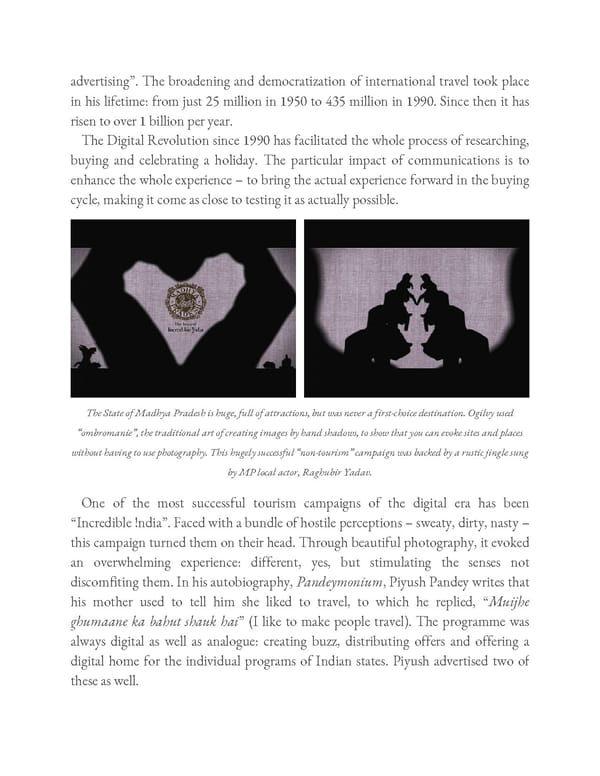advertising”. The broadening and democratization of international travel took place in his lifetime: from just 25 million in 1950 to 435 million in 1990. Since then it has risen to over 1 billion per year. The Digital Revolution since 1990 has facilitated the whole process of researching, buying and celebrating a holiday. The particular impact of communications is to enhance the whole experience – to bring the actual experience forward in the buying cycle, making it come as close to testing it as actually possible. The State of Madhya Pradesh is huge, full of attractions, but was never a first-choice destination. Ogilvy used “ombromanie”, the traditional art of creating images by hand shadows, to show that you can evoke sites and places without having to use photography. This hugely successful “non-tourism” campaign was backed by a rustic jingle sung by MP local actor, Raghubir Yadav. One of the most successful tourism campaigns of the digital era has been “Incredible !ndia”. Faced with a bundle of hostile perceptions – sweaty, dirty, nasty – this campaign turned them on their head. Through beautiful photography, it evoked an overwhelming experience: different, yes, but stimulating the senses not discomfiting them. In his autobiography, Pandeymonium, Piyush Pandey writes that his mother used to tell him she liked to travel, to which he replied, “Muijhe ghumaane ka bahut shauk hai” (I like to make people travel). The programme was always digital as well as analogue: creating buzz, distributing offers and offering a digital home for the individual programs of Indian states. Piyush advertised two of these as well.
 Ogilvy on Advertising in the Digital Age Page 339 Page 341
Ogilvy on Advertising in the Digital Age Page 339 Page 341